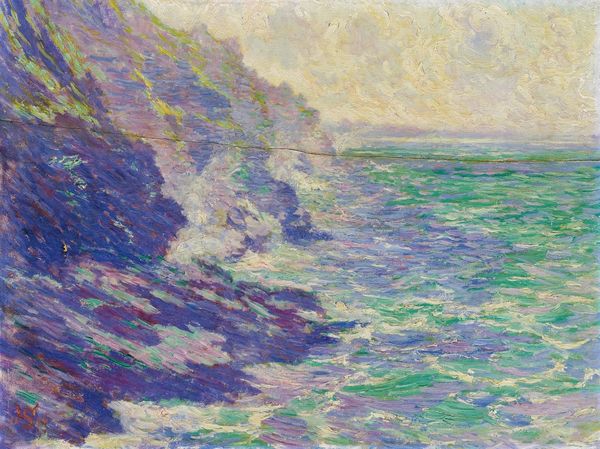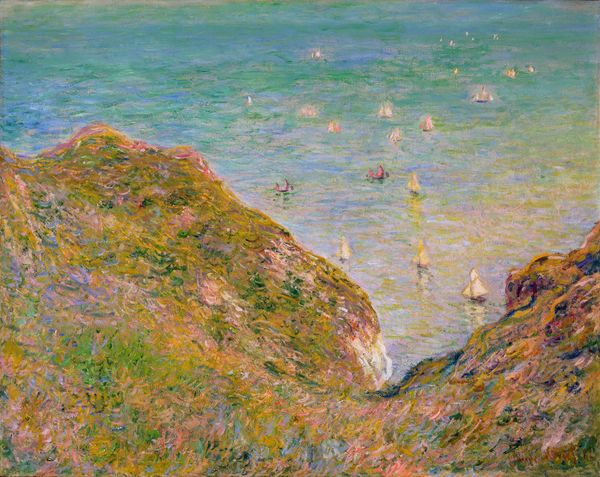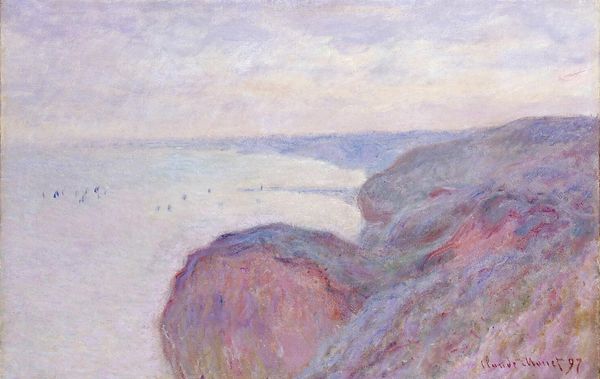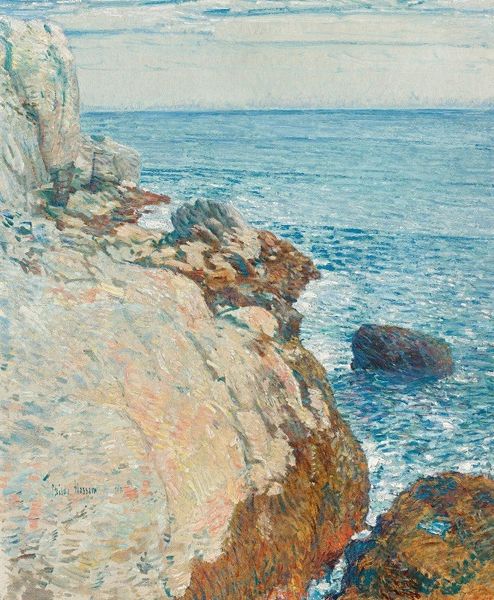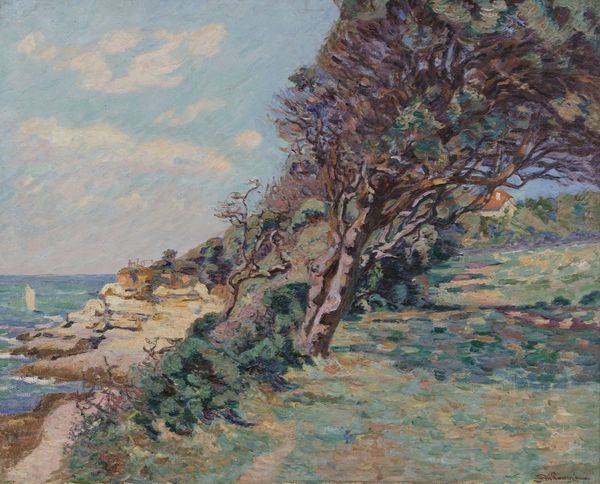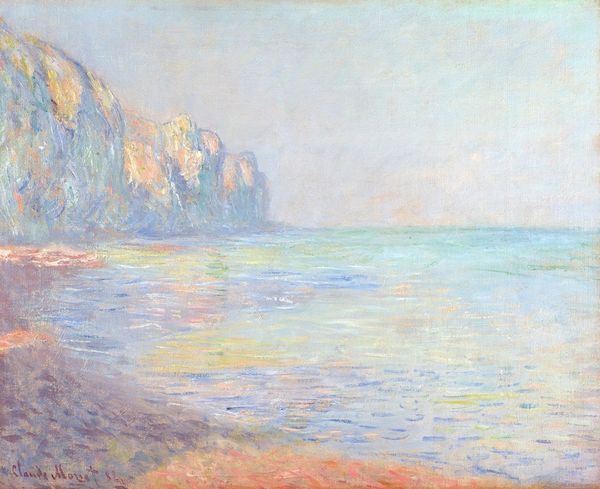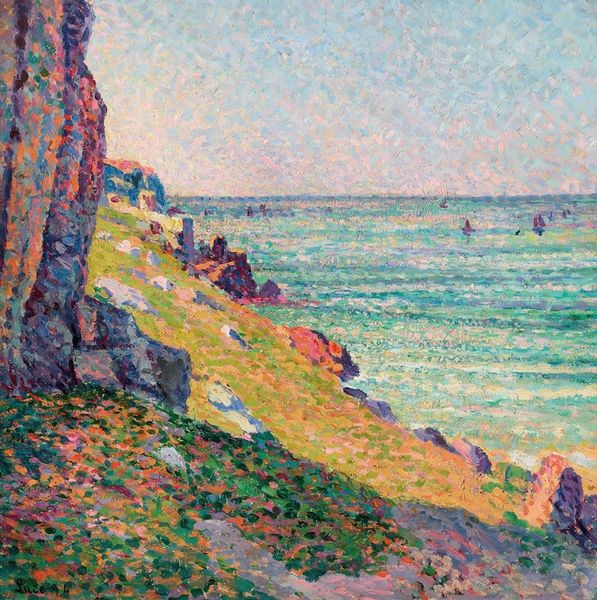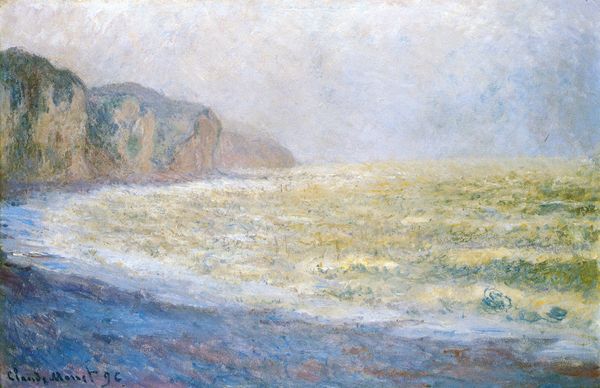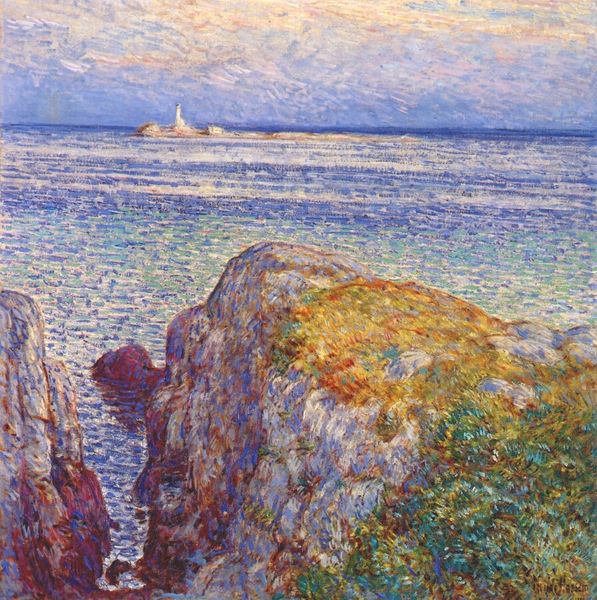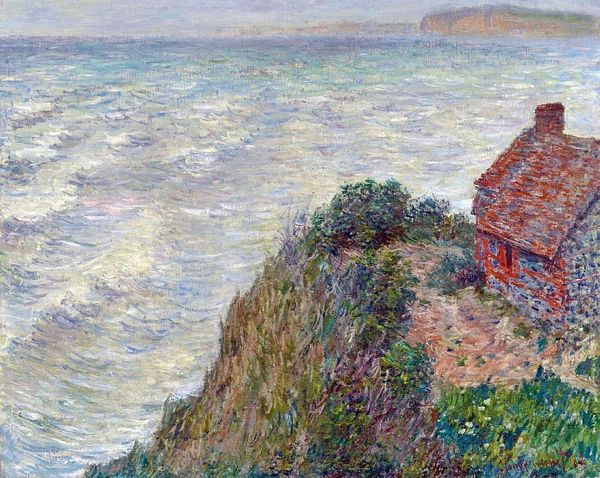
Copyright: Public domain
Editor: Here we have Theo van Rysselberghe's "The Cap Gris Nez," painted around 1900. It’s oil on canvas, and it feels incredibly…still, almost meditative. What’s your take? How do you interpret the scene? Curator: I see a space ripe with historical and social implications. Think about this: a port town, painted at the turn of the century. What social classes might have experienced this coastline differently? The working class, reliant on the sea, versus the emerging bourgeoisie who experienced it as leisure? Editor: I never thought about it like that. I was just focused on the landscape itself. Curator: But the landscape is never just *there.* Rysselberghe's post-impressionistic style, the individual dots of color, create a certain…distance, don’t you think? It's not hyperrealism; it's a constructed reality. Editor: Definitely. Almost like a screen. Does that distance relate to the social observation aspect you mentioned? Curator: It could. What is he obscuring by showing, and revealing, by hiding? Perhaps a critique of how even leisure is a construct, afforded differently. Consider the impact of industrialisation; maybe these 'natural' escapes aren’t quite so free. How does thinking about it in this way change your reading of the work? Editor: It adds a layer of complexity I hadn’t considered! It’s not just a pretty seascape, it's about who gets to experience it and how. Curator: Exactly. It becomes a commentary, whether intentional or not, on access, privilege, and the changing social landscape of the time. Editor: Thanks, I'll definitely keep that in mind. That’s changed my perception quite a bit. Curator: Wonderful! That’s what it’s all about, shifting perspectives, making the invisible, visible.
Comments
No comments
Be the first to comment and join the conversation on the ultimate creative platform.

